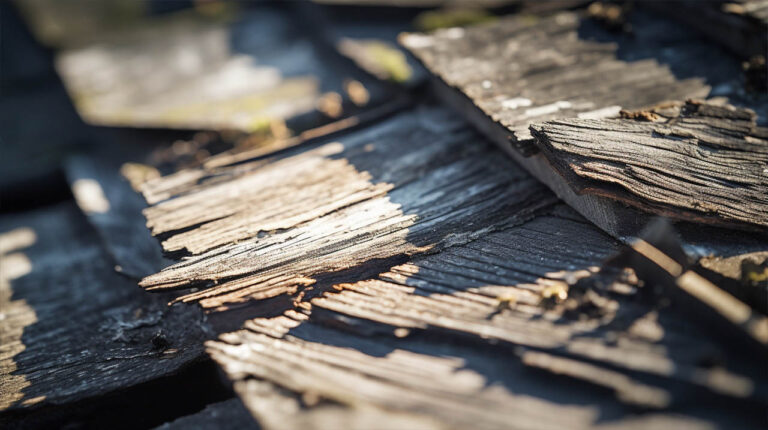Wood rot, often termed as dry rot, is a significant concern for homeowners. It’s a condition where fungi attack the wood, weakening its structure and compromising the integrity of your roof. At TecHero Roofing, we understand the importance of addressing this issue promptly and effectively. Let’s delve into the intricacies of wood rot and how to prevent it.
The Science Behind Wood Rot
Wood rot is a result of fungi feeding on the cell walls of wood. These cell walls are crucial for maintaining the strength of the wood. As the fungi consume these walls, the wood becomes brittle, making it incapable of supporting the roof’s weight. This deterioration can be challenging to identify without professional assistance, emphasizing the importance of regular roof check-ups.
How Does Wood Rot Begin?
Contrary to its name, dry rot requires moisture to initiate. There are several ways through which wood rot can manifest:
- Improper Drying: If a new roof’s timber wasn’t adequately dried before installation, the residual moisture can instigate rot.
- Roof Leaks and Insulation Issues: Leaks or inadequate insulation can lead to condensation, providing the moisture necessary for rot to thrive.
The progression of wood rot is swift. Addressing it immediately upon detection is crucial to prevent extensive damage or the need for a complete roof replacement.
Identifying the Presence of Wood Rot
While professional roofers from companies like TecHero Roofing are adept at spotting wood rot, homeowners can also be vigilant. Here are some signs to watch out for:
- Leaks and Moisture: The presence of leaks often indicates potential wood rot. Regularly inspect gutters, downspouts, roof flashings, and shingles for any signs of damage.
- Visible Rot Indicators: In your attic, a musty or damp odor can be an early sign. Brown spots on timbers or patches of varying colors that peel off can also indicate rot.
- Fungal Growth: Sometimes, the fungi responsible for the rot are visible. Look for white cobweb-like growths, grayish strands, or mushroom-like structures.
- Wood Testing: If in doubt, gently poke the suspected area with a screwdriver. If the wood is soft or crumbles easily, it’s likely affected by rot.
The Implications of Ignoring Wood Rot
Living under a roof affected by wood rot can have severe consequences. The fungi release spores that, while not directly harmful, can exacerbate respiratory conditions. Moreover, as the rot progresses, the roof’s ability to shield against external elements diminishes, leading to potential extensive damage and costly repairs.
Effective Treatment for Wood Rot
Upon detecting wood rot, it’s essential to consult experts like TecHero Roofing. Early-stage rot can be treated using fungicides like borate solutions. However, if the rot has spread significantly, the affected timbers might need replacement to halt its progression.
Proactive Measures Against Wood Rot
Prevention is always better than cure. Here are some steps to ensure your roof remains rot-free:
- Attic Insulation: Proper insulation prevents condensation, a leading cause of moisture accumulation.
- Shingle Maintenance: Regularly inspect and replace damaged or missing shingles.
- Gutter Maintenance: Ensure gutters are free from blockages. Consider installing gutter guards for added protection.
- Routine Roof Inspection: It’s advisable to inspect your roof at least twice a year. Addressing minor issues promptly can prevent significant problems in the future.
For homeowners in Moorpark, ensuring the health of your roof is paramount. Whether you’re looking for a roof repair in Moorpark or seeking a comprehensive roofing service in Moorpark, TecHero Roofing is your trusted partner in ensuring your roof remains in optimal condition.


